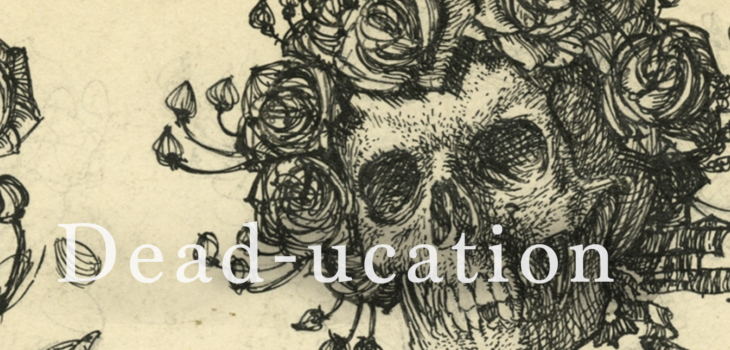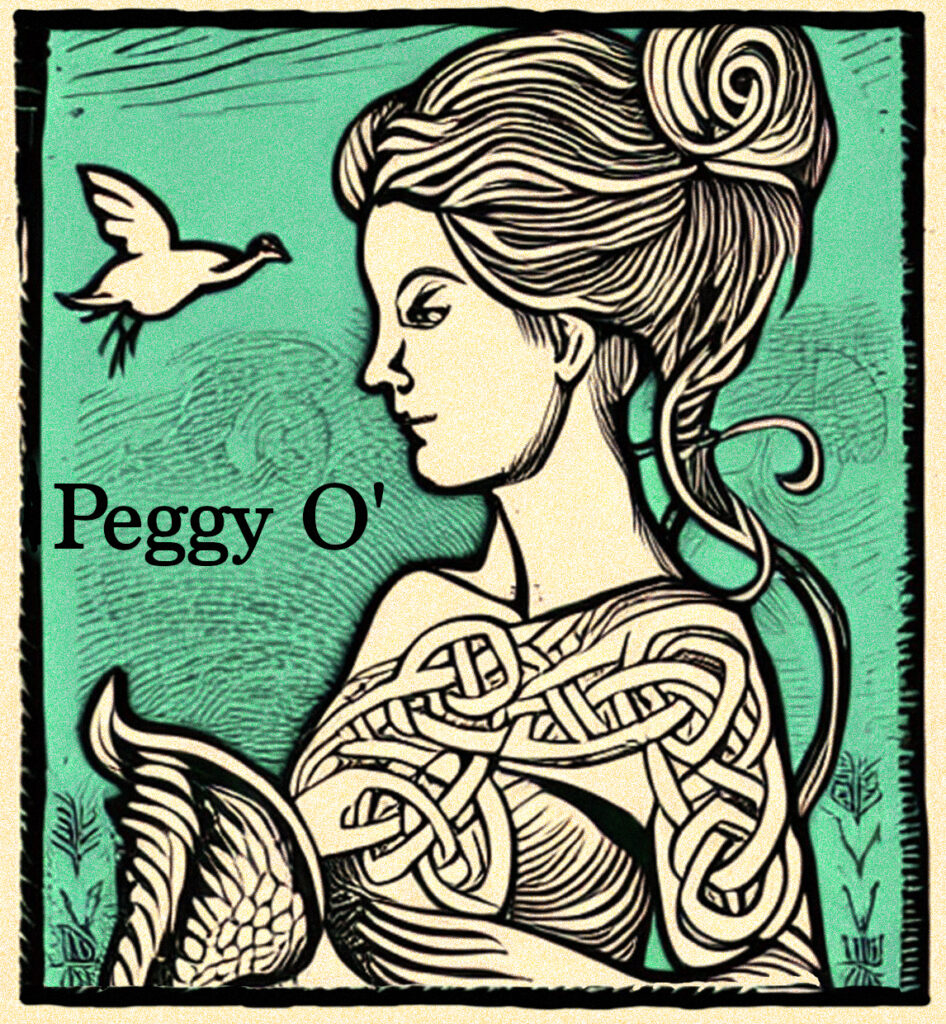

I have a love/hate relationship with Peggy O’. Of the 265 times it was played, there are perfunctory versions that would have you believe the song sucks. On the other hand, some versions are so sublime that some have commented that the song is likely on “God’s Jukebox.”
The first Peggy O’ I ever heard was Englishtown 9-3-77. I was commuting to the local state college for evening education, and this was on repeat to and from every class. It later inspired me to record a Celtic/Bluegrass version of the song with my group, Stoneybatter Band.
I later performed my version of the song at a local Irish music session, and as soon as I hit the last chord of the song, an older woman with a harp started singing a similar-sounding folk song called, The Bonnie Lass o’ Fyve-io. As it turns out, the song I thought the Dead penned is actually an ancient Celtic song that Jerry Garcia adapted. Jerry was forever a student of all music and loved traditional music from around the world. He was also an early supporter of traditional Celtic music in America, inviting The Chieftains to open for his bluegrass band Old And In The Way in the early 70s.
The first known recording of the Dead’s Peggy O’ was 12-12-73.
In their inaugural version, they play it with an upbeat swing shuffle feel, with drums accenting the backbeat. This approach makes it danceable and something you might tap along to, but it does sound like the first time they ever played it together.
In their second performance, 12-18-73, we hear the Dead already slowing the song down and hinting at the gorgeous ballad it would become. The first performance sounds like they are learning the fundamentals of the music, and, other than not playing it badly, there is nothing extraordinary about the performance. Kinda a beer break song. The second performance feels like music, where the exploration begins. Phil has more robust ideas, Jerry’s voice starts to settle in, and he, notably, takes two separate solos testing new directions. The band is also starting to understand the potential. You might have been disappointed if you were standing in the beer line for this charming version.
It takes a few years for Peggy O’ to evolve from the shuffle to the beloved ballad of unrequited love that it became. 1977 seems to be a high tide year for Peggy O’, though ’78 does have some winners. It was played 27 times in ’77, second only to the 31 times in ’78. The fact that ’77 has more beauties than any other year shouldn’t surprise a seasoned Head, as many argue that 1977 was the best year for the Dead.
A nice Peggy O’ provides a platform for Jerry’s voice and guitar to squeeze as much color out of the ballad as possible. Too fast, and the opportunity is squandered. For example, 12-27-77 is satisfying in many ways but sacrifices some potential drama due to its slightly pushed tempo. However, the blistering solo in this version is hard to argue with. Compare this version with some of the somewhat slower versions from ’77, and you begin to get a feel for how subtle changes could morph a solid song into something of exquisite beauty.
In great Peggy O’s, we also hear Phil moving the bass line as a counterpoint to Jerry’s melodic prowess. The two lines move in different directions as if they have a life of their own but somehow seem to work together serendipitously.
A brilliant Peggy O’ has each instrument traveling its own path, but all connected to one head, like the tentacles of an octopus.
Of course, there is no such thing as “the best,” but with all that said, here are some versions that offer a window into how beautiful and entrancing this pretty Peggy O’ indeed was:
5/22/77 – The Sportatorium
This Peggy O’ has it all. It’s the octopus. If your hair doesn’t stand on end by the 4:20 mark of this gem, then we are listening to different things, and that’s ok.
Bill and Mickey set the train on its track from the start, and then Phil’s bass sets the tone for what’s to come. Jerry always said that if Phil was on, the band was on. Phil is on. With Phil holding down the bottom, Jerry can drop in and out as needed during the verse and achieve full lift-off during the solo. When Jerry felt creatively melodic, he was inspired to go a few extra rounds on a solo, each time getting progressively more potent with his note selection. In this version, he could have ended after round two, and everyone would have been happy, but he was feeling it and smokes the third repeat, and the band will not let him down while he’s doing it. Jerry’s voice has the fragile sadness of a weathered storyteller sharing his heartbreak. Bobby sings a subtle but perfectly in-tune harmony early in the song, rare for the Dead, and The Kid’s anti-rhythm guitar pokes in and out to accent empty moments between the vocals. The piano moves around like an unsuspecting riptide, and the drummers are not keeping time as much as they are groovin’ with purpose. A nice nuance in the drumming is Mickey’s marching band rudiments in the quiet verse towards the end of the song. It’s gooey Dead goodness at its best.
5/9/77 – War Memorial Auditorium
This is arguably one of the greatest shows ever, and the Peggy O’ doesn’t disappoint. It could be more gentle, contemplative, or slightly sadder than 5/22/77. A nice feature of this is the lovely piano that shines through. You can also hear those marching rudiments come through early in this song. Depending on your mood, this might be a more appealing version than 5/22/77. It’s worth comparing, and I’d always keep the station on if this were playing.
6/4/77 – The Forum
This one will challenge you a bit more as it is an Audience tape and not a Soundboard, and you get to hear little time capsules like the girl at the beginning wondering out loud if “We’ll ever hear China Cat again.” There is no soundboard available for this show, but many claim it is one of the great shows of 1977. The show has been a bit lost in time because of the audio quality. Where the others are a bit like keeping your peas and carrots separate on the plate, this is a hot steaming stew. However, if you let your ears adjust and picture yourself in the venue, with sound reflecting off the cavernous walls, you can hear a stellar Peggy O’. Maybe it is the fact that someone pointed a mic to Jerry’s guitar amp, or perhaps it is just that Jerry slays it, but the solo on this has a grit that the others don’t. If you were to argue that there was one sour note with this solo, it is the second one. He, amusingly, slides up to a note that is higher than he might have liked but immediately rights the ship and uses that moment to dig in and launch into something extraordinary. What Garcia is doing with this stunning solo is finding the melody around the melody. He navigates to the 3rds and 5ths above and below the melody, which has the effect of creating a new melody that is in perfect harmony with the primary melody. This type of musical counterpoint is very Baroque and was the hallmark of Bach, and Jerry finds it on the fly. It’s brilliant. At the end of this performance, you hear how joyous the audience feels about it all. Such a sweet moment. How nice it would have been to see this one live.
These are just a few of my favorites, but I’m curious to hear your thoughts. Happy listening!
1 COMMENT
I’m here for any deep dive that culminates in Spring ’77.